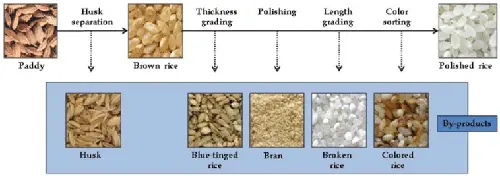
By Hargovind Rice Machinery Solution LLP
Saturday February 15 2025
Paddy processing
Parboiling technology
Paddy Processing – A Step-by-Step Guide to Transforming Raw Paddy into High-Quality Rice
Rice is a staple food for millions of people worldwide, and its journey from the field to your plate involves several intricate steps. Paddy processing, a critical part of this journey, transforms raw harvested paddy into edible rice. This process not only improves the quality of rice but also enhances its nutritional value, shelf life, and marketability. Let’s explore the paddy processing stages and why they are vital to the rice industry.
What is Paddy Processing?
Paddy processing is the series of operations carried out to convert raw paddy into polished rice grains. These operations involve cleaning, husking, whitening, grading, and packaging. Each stage is designed to ensure the rice retains its quality while meeting market standards.
Key Steps in Paddy Processing
Pre-Cleaning Once the paddy is harvested, it is cleaned to remove impurities such as dust, straw, stones, and other foreign materials. Pre-cleaning ensures that only paddy grains enter the processing line, minimizing damage to the machinery and improving the final product's quality.ParboilingParboiling is an optional but highly beneficial process. It involves soaking, steaming, and drying the paddy to improve the nutritional value, reduce breakage during milling, and enhance storage life. Parboiled rice is less prone to insect infestation and retains more vitamins and minerals.
Drying Proper drying is crucial to reduce the moisture content of paddy to safe levels for storage and milling. Excessive moisture can lead to spoilage, while under-dried grains are prone to breakage during milling. Modern drying techniques, like mechanical dryers, ensure uniform drying and save time.
De-HuskingIn this stage, the husk is removed from the paddy to produce brown rice. The husk is often used as a by-product for animal feed, fuel, or other purposes.
Polishing and Whitening Brown rice is further processed to remove the bran layer, resulting in white rice. This stage determines the appearance of the rice, which is crucial for consumer preferences. Advanced milling machines ensure minimal grain breakage while achieving a polished finish.
Grading and Sorting Rice grains are graded and sorted based on size, shape, and quality. This step removes broken grains and impurities, ensuring uniformity in the final product. Grading improves marketability and adds value to the rice.
Packaging The final stage involves packaging the processed rice in secure and durable bags. Proper packaging protects the rice from moisture, pests, and contamination, ensuring it reaches consumers in pristine condition.
Benefits of Advanced Paddy Processing
Improved Yield: Modern paddy processing techniques minimize grain breakage and maximize yield.Enhanced Quality: Advanced equipment ensures the rice is free from impurities and meets quality standards.
Nutritional Retention: Techniques like parboiling help preserve essential nutrients in the rice.
Extended Shelf Life: Proper drying, storage, and packaging significantly improve the rice's shelf life.
Cost Efficiency: Automation and advanced machinery reduce labor costs and processing time.


nOY HdPKBQPJ TCiArMtX
nOY HdPKBQPJ TCiArMtX
nOY HdPKBQPJ TCiArMtX
nOY HdPKBQPJ TCiArMtX
nOY HdPKBQPJ TCiArMtX
nOY HdPKBQPJ TCiArMtX
Good!
I like it...